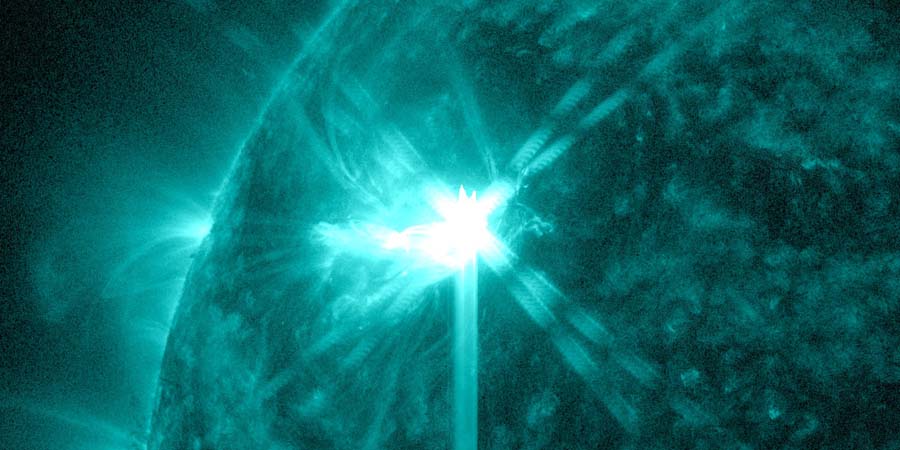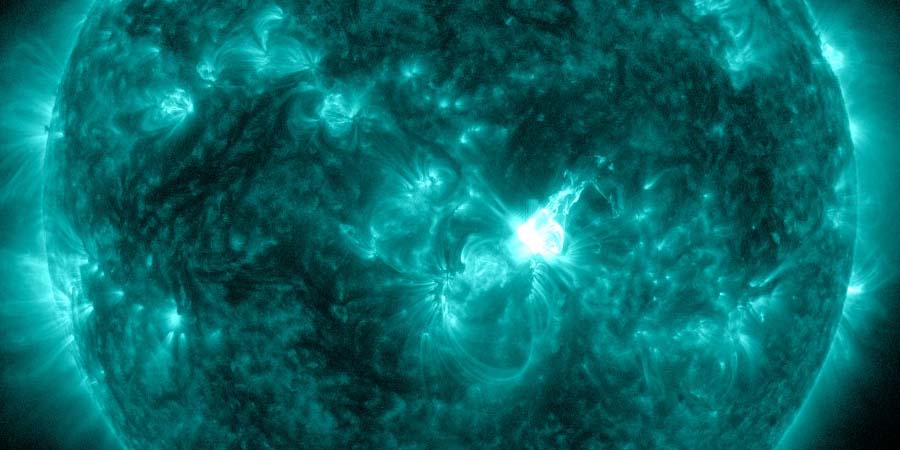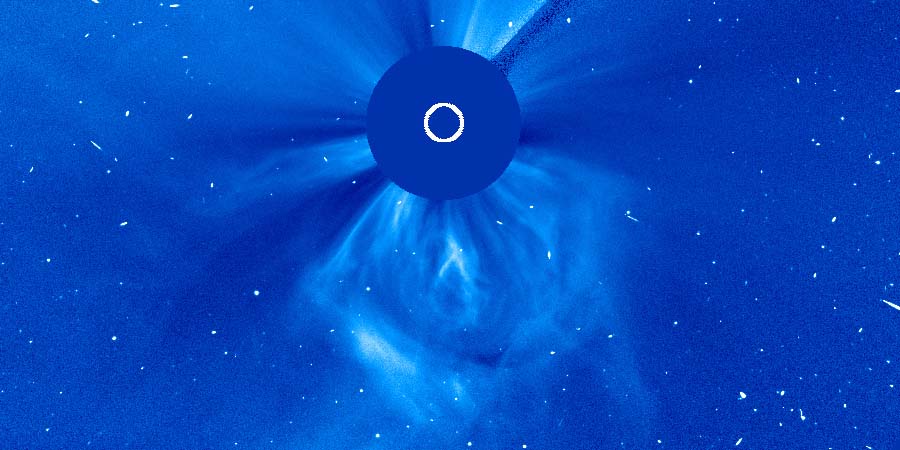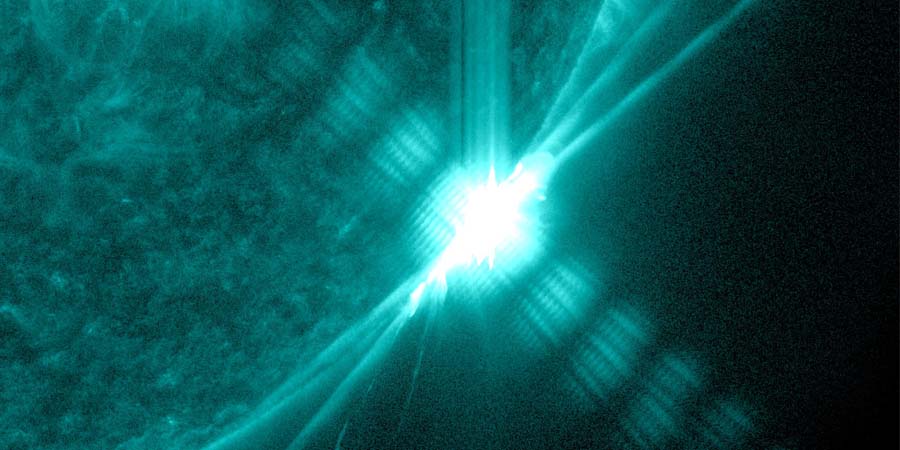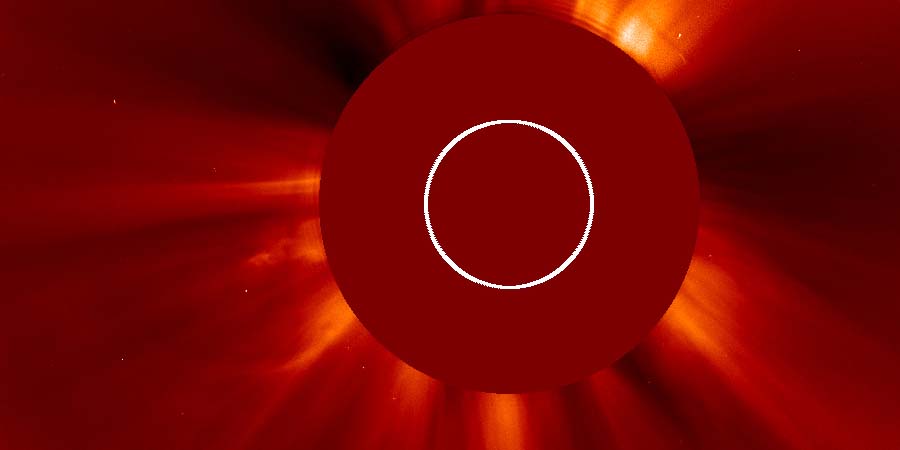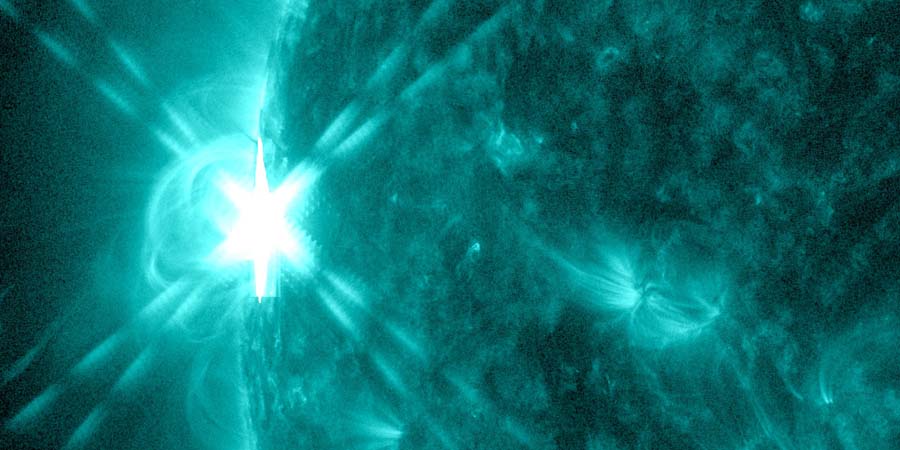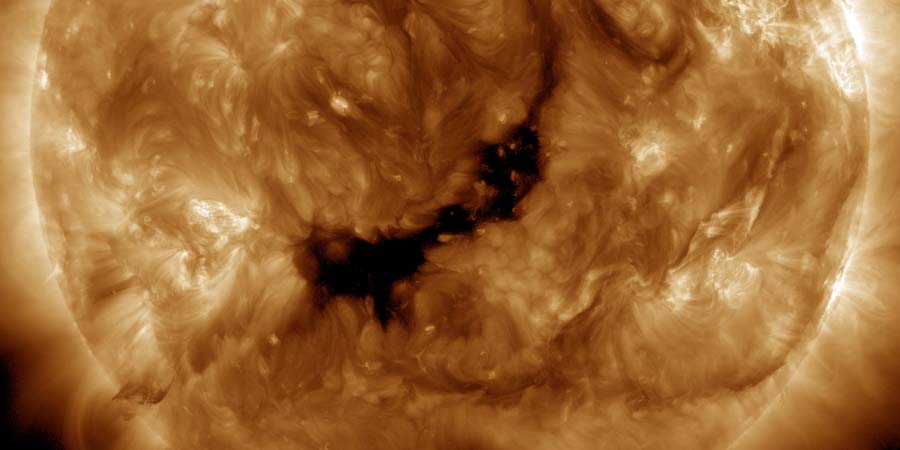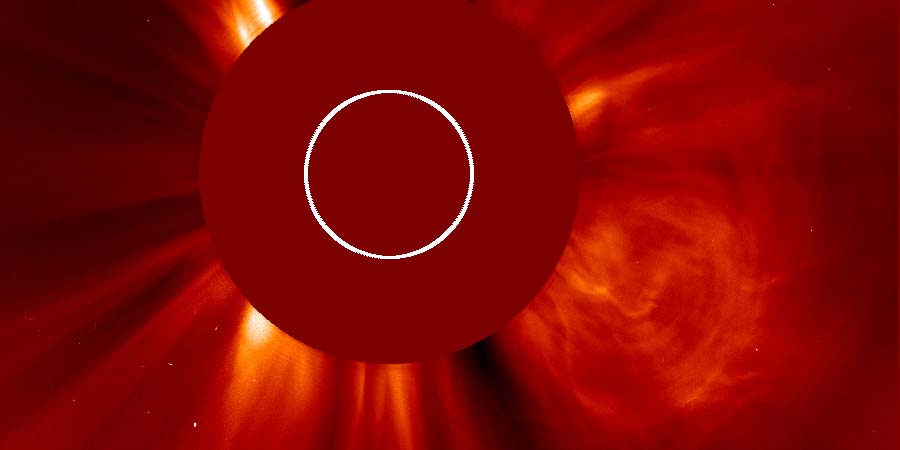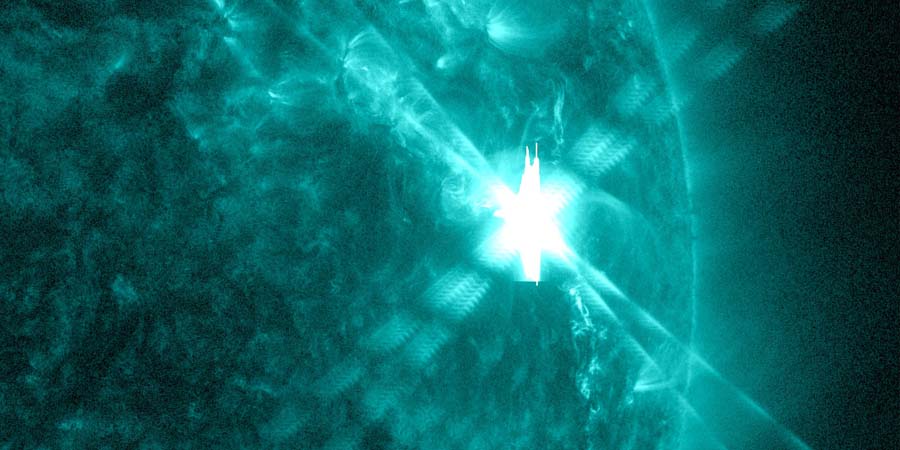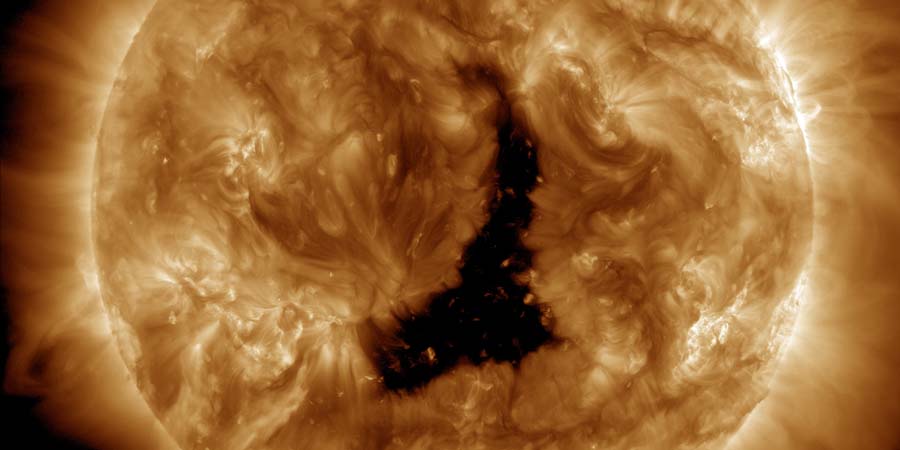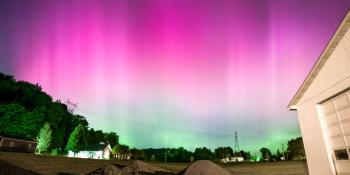Latest news updates Subscribe
Two X-class solar flares only 7 hours apart
Perşembe, 22 Şubat 2024 08:33 UTC
Sunspot region 3590 which is located at a fairly high latitude produced two impulsive X-class events. The first solar flare peaked yesterday at 23:07 UTC with a maximum X-ray flux of X1.9 and the second solar flare peaked today at 06:32 with a maximum observed X-ray flux of X1.7. Both events caused a brief strong R3 radio blackout at the day-side of our planet.
M9 solar flare with earth-directed CME
Pazar, 11 Şubat 2024 17:24 UTC
Finally a sign of life from sunspot region 3576! It produced an M9.0 solar flare (R2-moderate) which peaked yesterday at 23:07 UTC. The solar flare was fairly impulsive but did produce a nice eruption with a mostly northward trajectory.
New day, new coronal mass ejections to look at!
Cumartesi, 10 Şubat 2024 18:34 UTC
Another day, another big coronal mass ejection... but this time it came from the south-east limb! The coronal mass ejection from yesterday's X3.3 solar flare was impressive but we have yet another fine specimen to look at. An incoming sunspot region erupted with a M3.4 solar flare that peaked at 03:54 UTC. This coronal mass ejection is just like the coronal mass ejection from the X3.3 solar flare not aimed at our planet.
X3.3 solar flare
Cuma, 9 Şubat 2024 18:15 UTC
Departing sunspot region 3575 which is already behind the south-west limb said goodbye this afternoon with a major X3.3 (R3-strong) solar flare which peaked at 13:14 UTC.
G2 geomagnetic storm watch
Pazar, 21 Ocak 2024 19:41 UTC
A moderate G2 geomagnetic storm watch has been issued by the NOAA SWPC for Monday, 22 January and Tuesday, 23 January. This is due to the expected arrival of a coronal mass ejection launched by a eruption south of sunspot region 3557 early yesterday morning.
Major X5.0 solar flare
Pazartesi, 1 Ocak 2024 15:16 UTC
Happy New Year to all of our visitors and fans! How do we celebrate that? With a major solar flare of course! The Sun was kind enough to produce some spectacular fireworks yesterday just two hours before UTC midnight. It was a major X5.0 (R3-strong) solar flare that peaked at 21:55 UTC. Sunspot region 3536 is the source of the eruption which is just rotating into view on the east limb. This is actually the return of sunspot region 3514 which produced an X2.8 solar flare during the previous solar rotation.
Coronal hole faces Earth
Cuma, 29 Aralık 2023 18:09 UTC
Solar activity has been fairly quiet the past few days as there are currently no noteworthy sunspot regions on the earth-facing solar disk. However, a different kind of interesting solar feature is currently staring right at us on the earth-facing solar disk and that is a trans-equatorial coronal hole.
Earth-directed CME, M6 solar flare
Cuma, 15 Aralık 2023 19:21 UTC
Yesterday's X2.8 solar flare (which is the strongest solar flare since 2017) came from sunspot region 3514 which is rotating towards the west limb. It became clear quite soon following the event that it would be eruptive but is there a chance that the resulting coronal mass ejection (CME) arrives at Earth? Keep on reading for the answer!
Major X2.8 solar flare
Perşembe, 14 Aralık 2023 17:34 UTC
A major X2.87 (R3-strong) solar flare just peaked at 17:02 UTC. Sunspot region 3514 is the source of the eruption.
Coronal hole faces Earth
Cumartesi, 2 Aralık 2023 15:37 UTC
The geomagnetic storm which was the result of a coronal mass ejection impact from the M9.8 solar flare has now subsided. The north-south (Bz) component of the interplanetary magnetic field is pointing northwards which is preventing any kind of geomagnetic unrest at the moment. We did peak at the strong G3 geomagnetic storm level which caused some very nice auroral displays at lower latitudes than usual. So does that mean we need to wait for weeks and weeks before the next geomagnetic storm? No! A very large coronal hole is currently facing our planet sending a high-speed solar wind stream towards us.
Son haberler
Güncel forum mesajları
SpaceWeatherLive.com'u Destekle!
SpaceWeatherLive'a birçok insan Güneş'in aktivitesini takip etmek veya gözlenebilecek aurora olup olmadığını görmek için geliyor, ancak daha fazla trafik daha yüksek sunucu maliyetlerine neden oluyor. Eğer SpaceWeatherLive'ı seviyorsanız, web sitesini çevrimiçi tutabilmemiz için bağış yapmayı düşünebilirsiniz!

Uzay Hava Durumu Gerçekleri
| Son X-patlaması | 2024/05/15 | X2.9 |
| Son M-patlaması | 2024/05/19 | M1.8 |
| Son jeomanyetik fırtına | 2024/05/17 | Kp6 (G2) |
| Lekesiz günler | |
|---|---|
| Son lekesiz gün | 2022/06/08 |
| Aylık ortalama güneş lekesi sayısı | |
|---|---|
| Nisan 2024 | 136.5 +31.6 |
| Mayıs 2024 | 157.7 +21.2 |
| Last 30 days | 171.7 +57.7 |
